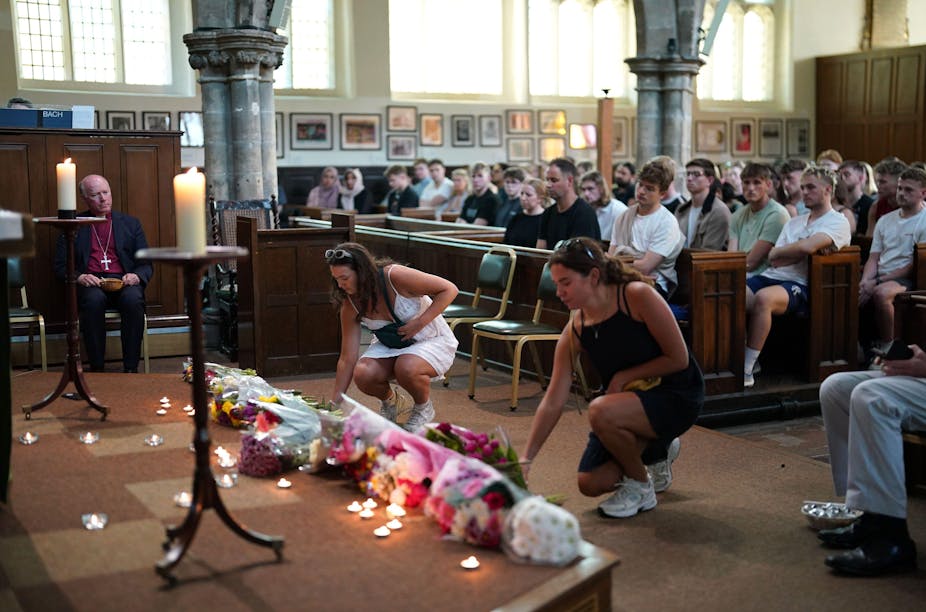Before most people in Nottingham, UK, had awoken on the morning of June 13, Nottingham University students Barnaby Webber and Grace Kumar, along with school caretaker Ian Coates, were killed in a violent attack. Three further people are still recovering in hospital.
The following day, thousands joined the families of the two students in a moving vigil at Nottingham University’s main campus. A further vigil in the city centre was held on the afternoon of June 15, and a steady stream of flowers, tributes and candles have appeared at St. Peter’s Church in the city.
Such tragedies devastate the lives of individuals, families and communities. As news of the event has spread, people around the country and the world have witnessed the grief and loss of those directly affected. News coverage is significant and widespread as people vicariously experience the emotional impact of the event.
Research shows that collective acts of grief, such as vigils, can be helpful – both for individuals and their community.
Collective grief
Grief scholars Nancy Kropf and Barbara Jones have outlined that what is particularly noteworthy about public tragedies is that they give rise to a unique blend of trauma, grief, disenfranchisement and confusion. And this unique blend is different to the loss and bereavement that might stem from other circumstances.
Most public tragedies directly attack assumptions we have about life as we know it. They are events that present us with rare, unpredictable and brutal loss or destruction of our built environments, property, lives, daily routines and security. In this sense, they disrupt and threaten a precarious sense of safety we rely upon as we go about our daily lives. And that gives rise to a unique experience of trauma, confusion and grief.
Grief scholar Ritesh Kumar has described how collective grief in response to public tragedies such as the Nottingham incident often involves complex layers of trauma for the community. On the one hand, people can experience a sense of vicarious trauma from witnessing the suffering of those directly affected, as well as from a realisation that “it could have been me.”
But this experience often sits alongside a sense of grief and loss that connects to the fact that the school, university, city or community we implicitly trust as a “safe space,” cannot completely protect us from some of our deepest existential fears.
On some level, we grieve the fact that our community bubbles are never completely impervious to extreme threats or danger. It is likely that the city of Nottingham is currently going through such suffering.
Spontaneous memorials
One way that communities like Nottingham grieve together is through spontaneous vigils and memorials, which are important collective mechanisms for coping and responding to the public tragedy.
History scholar Karen Kroslowitz has defined them as “temporary assemblages of objects, artwork and documents, impulsively and deliberately deposited by the general public at or near sites specific to violent and untimely death.” She argues that they’ve been created with increasing frequency in response to public tragedies in the last few decades.
New York Times writer Marshall Sella described such spontaneous memorials as:
the language of grief being passed along: person to person, block by block – then sweeping over the continent on television – then block by block once again.
In this sense, they reflect an important community space for shared collective grief. They help facilitate a dialogue through which individuals help each other to make sense of the confusing experience.
Kroslowitz has also argued that spontaneous memorials are important because they are often public spaces where people feel it’s acceptable to communicate with the dead.
In some cases, spontaneous memorials, such as the Oklahoma City Bombing Memorial Fence, have become permanent community spaces – immortalising and indefinitely extending the collective function they originally served.
As we witness and experience the Nottingham tragedy, the significance of these collective experiences and responses cannot be underestimated. And our individual experiences and responses may make more sense in light of them.

